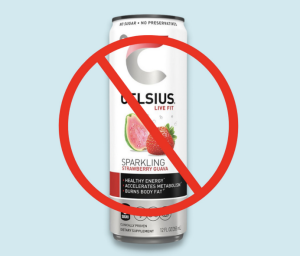What is Weed?
April 14, 2021
Andrew Hansen | Sports Editor
Marijuana has exploded on the scene as states continue to allow usage of marijuana for medicinal and recreational purposes. According to History.com, ancient cultures at around 500 BC started to use marijuana not for recreational purposes but for medical purposes. Hemp fiber was even used to create clothing, paper, sails, rope and the seeds were used as food.
In the late 1800s, cannabis extracts were sold in pharmacies to treat nausea and help promote hunger. These effects of tetrahydrocannabinol (THC) were shown to help patients who were in the midst of chemotherapy and loss of appetite for patients with AIDs in pill form Marinol and Syndros.
According to Dr. Malik Burnett and Amanda Reiman, PhD, the early 1900s was a tumultuous time for the United States. During this time, the Mexican Revolution was taking place in 1910 and Mexican immigrants were flooding over the border into the United States. Recreational; use of marijuana was being introduced to American culture and the drug coincided with immigrants, fear and prejudice about Spanish-speaking immigrants.
The Marijuana Tax Act of 1937 was then passed which effectively criminalized marijuana, restricting possession of the drug to individuals who paid an excise tax for certain authorized medical and industrial uses.
In 1996, California became the first state to allow medical marijuana use.
Today, there are 17 states in which marijuana is legal for recreational use. In addition, there are 36 states total that have passed legislation for medical marijuana programs, according to the National Conference of State Legislators.
As the marijuana industry expands, a plethora of new marijuana strains are being developed and released to the public. The main strains are indica, sativa and hybrid.
The indica dominant strains, according to The Recovery Village, originated near Afghanistan. The appearance of the marijuana tends to have darker leaves and the bud tends to grow in clumps. The indica dominant marijuana has high levels of THC and low levels of CBD. This results in effects that cause a relaxed or sedated feeling. This gives the consumer the feeling of a “body high.”
The indica dominant strains are often used to help those dealing with insomnia. According to a study from 2019, it showed that people who used an indica dominant strain felt more pain relief and relief from insomnia versus a sativa dominant strain.
“My first time smoking marijuana, I feel in love with the sedating and anxiolytic effects of indica strains,” said an anonymous GC student. “I prefer indica strains over sativa strains because sativa strains increase anxiety for me, while indica reduces it.”
The sativa dominant strain, according to The Recovery Village, originates from warmer climates which tends to grow very tall and thin. It flowers under certain light conditions, which means it needs darkness for more than 11 hours per day. With sativa dominant marijuana, there are lower levels of THC and higher levels of CBD compared to indica dominant. Due to the makeup of the marijuana, the effects are more energizing and tend to cause more creativity and help the consumer focus more intently.
The sativa dominant strain has been used to help those with depression because of the uplifting effects.
“I would much rather smoke and be able to do stuff than smoke and take a nap,” said an anonymous GC student. “Doing stuff high is awesome and when I smoke indica I can’t really do much.”
A hybrid strain, according to The Recovery Village, is made by cross germinating the seeds of cannabis in order to have the effects of both indica and sativa. The effects are based on whether the marijuana is sativa dominant or indica dominant.
“My favorite is hybrid,” said an anonymous GC student. “It’s a good balance between having an active high and a calming high.”
Although there can be positive effects from the use of marijuana, there is a risk of dependency of the drug. According to the National Institute on Drug Abuse, “30% of those who use marijuana have some degree of marijuana use disorder.” In addition, those who begin to use marijuana before the age of 18 are four to seven times as likely to develop marijuana disorder than adults.
Withdrawal symptoms can occur and last up to two weeks for those who quit while using marijuana frequently. Some of the symptoms include irritability, mood and sleep difficulties, loss of appetite, etc. These withdrawal symptoms occur because, according to the National Institute on Drug Abuse, “the brain adapts to large amounts of the drug by reducing production of and sensitivity to its own endocannabinoid neurotransmitters.”
The tide is changing on the stance of marijuana in the United States as more states pass legislation to legalize the medical and recreational use of marijuana. It feels inevitable before marijuana is federally legalized in the United States. Only time will tell.















